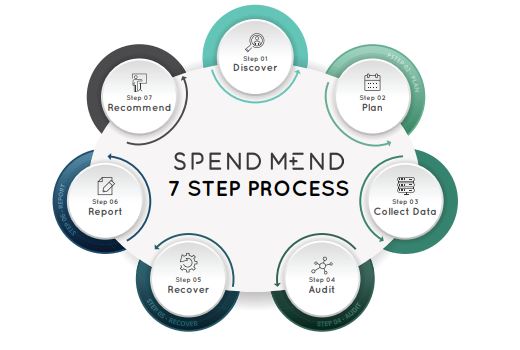
Every Organization Has Financial Leakage
Every year, Medical Industry Suppliers lose untold millions due to financial leakage in the cost cycle. But there is hope; the errors can be corrected,
and the lost revenues can be recovered. By performing an industry leading SpendMend Profit Recovery Solution, your company will identify and reclaim losses while at the same time gain insight and visibility into your processes.
This means you can prevent these errors from occurring again in the future. Although every profit recovery audit is unique, SpendMend follows a tested 7-step process:
The Features of the SpendMend Profit Recovery Audit Solution
Duplicate Payment Audit
Proprietary searches and scripts
Statement Audit
Automated outreach and OCR to maximize credits
Contract Compliance
Price-change monitoring to ensure terms
Online Portal
Real time insight and visibility into results and reports
Reporting & Analysis
A robust suite of reports to drive improvements
Offsite and Efficient
Offsite workforce will not require system resources
The Benefits of Using SpendMend to Stop Your Financial Leakage Include
Industry Leading Recovery
Receive $1.24M per every $1B in annual spend
Visibility & Insight
Gain in-depth Root-Cause Analysis for all claims
Future Loss Prevention
Enjoy a 59% rate-of-error reduction within 2 years
Improved Processes
Experience key process improvement
Time Savings
Reduce resource drain with SpendMend’s recommendations
Negotiating Leverage
Negotiate favorable terms by leveraging audit insights
DATA SHEET
Medical Supplier Profit Recovery Overview

SpendMend has proudly served all manner of business entities throughout the healthcare industry for over 28 years including hospitals, pharmacies, and suppliers. Our goal is to leverage our deep knowledge of the industry to help improve patient care through the value of our innovative cost savings solutions, insightful transaction analysis, and improved visibility across business relationships.
Our team members have worked with 16 of the Top 25 medical suppliers delivering over $1 Billion in realized savings. Our specialized work with medical suppliers is some of the most critical work we perform ensuring that healthcare systems are working with a healthy supply chain consisting of thriving suppliers.
The Role of Dark Data
Dark Data is critical information that organizations collect, process and store during regular business activities, but generally fail to use for other purposes. Left unchecked, this unseen information drives financial leakage. For over 30 years, SpendMend has shone a light on dark data, illuminating control gaps, reducing cost and recovering lost revenue.

